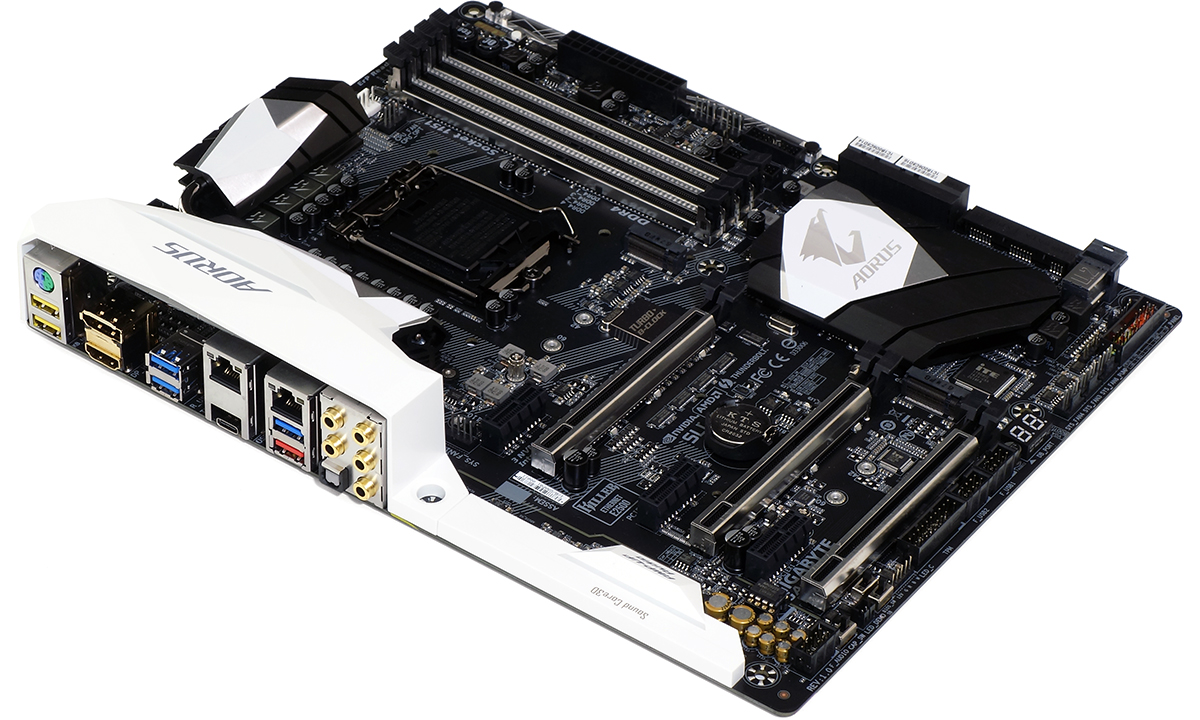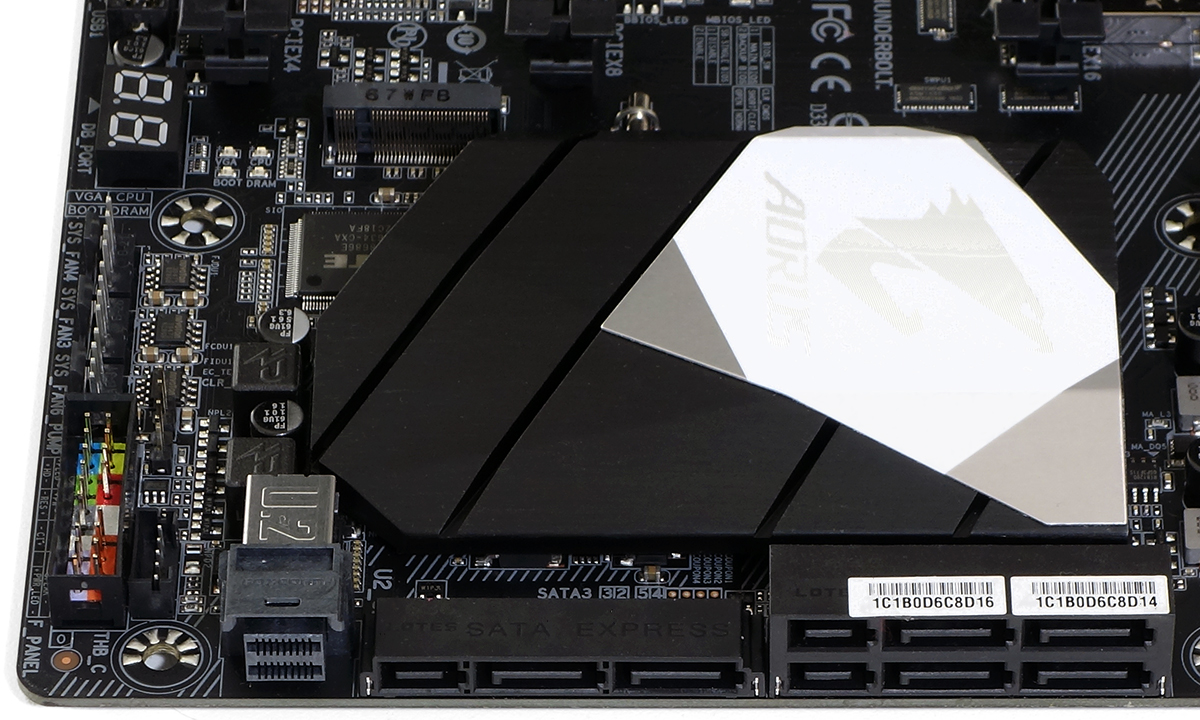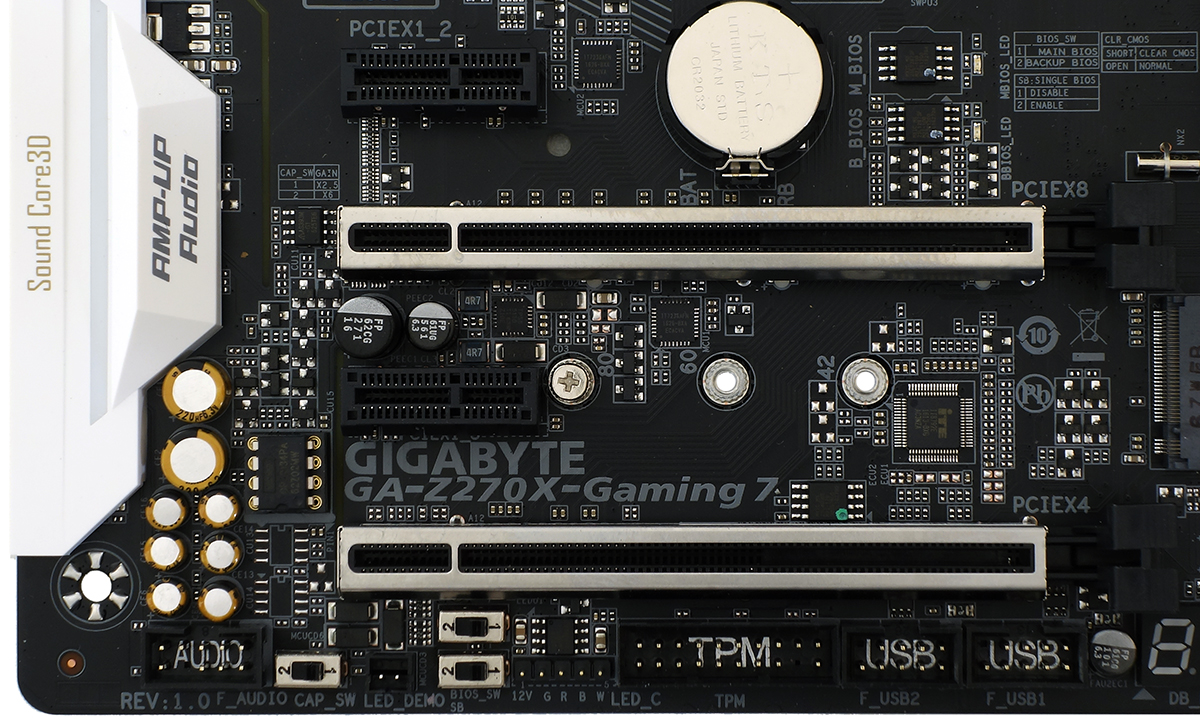Early Verdict
With exceptional overclocking stability and a Dynamic vCore setting to overcome its firmware oddities, Aorus Z270X-Gaming 7 could be perfect for system tuners. Builders afraid to mess around with the default firmware settings to achieve their goals should wait for a major firmware revision before considering this one.
Pros
- +
Exceptional DRAM overclocking
- +
Great CPU overclocking stability
- +
Triple NVMe support via dual M.2 plus U.2
- +
Triple NVMe support via single M.2, PCIe, and U.2
- +
Dual Gigabit Ethernet with both Intel and Killer controllers
- +
Multi-zone LED lighting with LED-strip controller output
Cons
- -
This firmware revision defaults our Core i7-7700K to fixed voltage operation
- -
Odd resource sharing between M.2, SATA, and PCIe requires careful build planning
- -
Network Device Teaming not possible with dissimilar Ethernet controllers
Why you can trust Tom's Hardware
Introducing Aorus Motherboards!
Motherboard manufacturer Gigabyte has also been making notebook PCs for as long as most of us can remember, not just under the Gigabyte banner, but also eventually through an ultra-deluxe gaming notebook brand, Aorus. Aorus went on to market and sell everything from keyboards to mice, and now that the newer premium brand is flourishing, Gigabyte decided to bring it back to the manufacturer's motherboard roots.
The Aorus Z270X-Gaming 7 I/O panel doesn’t have any of those old-fashioned resource-preserving USB 2.0 ports, but it does have a distinct set of USB 3.0 ports marked in yellow to indicate special noise prevention circuitry for use with USB headsets. It also has three other USB 3.0 ports, a true USB 3.1 Type A port marked in red, and a Type-C port. Both the Type A and Type-C ports are fed by Intel’s Thunderbolt 3 controller, assuring that the Type-C connection can also be used as a Thunderbolt 3 data and/or DisplayPort interface. Not that the board is lacking for DisplayPort, as a full-sized connector resides above its HDMI output. We also see two Gigabit Ethernet ports, five audio jacks, and a digital optical audio output.
Those USB 3.0 ports are labeled USB 3.1 Gen 1, just so you’ll know they support your modern devices, if only at half speed.
A description of the Aorus Z270X-Gaming 7 with a count of PCIe and HSIO resources is complicated, to the point that it makes sense to put each of them in further perspective. The board, for example, has two M.2 interfaces and six SATA, yet the manual explicitly states that adding a PCIe SSD to the upper M.2 slot will disable two SATA ports, and that only makes sense if those ports are switched from SATA to PCIe in the chipset’s HSIO resource table. The second M.2 slot shares two lanes with the bottom PCIe slot: While either of these can support x4 transfers, using them simultaneously forces both interfaces into x2 mode.
All six SATA ports are bundled as SATA-Express interfaces, allowing two PCIe lanes and two SATA ports to transfer over a single interface cable. Gigabyte doesn’t say what happens to the PCIe lanes of SATA ports 4 and 5 when the resources of those ports are donated to the M.2 interface, but given the 30 HSIO limit and the relative unpopularity of SATA-Express, this might have been a good place to spare some HSIO resources.
Unlike competing boards, the PCIe x4 U.2 connection is listed as having dedicated lanes. Unlike SATA-Express, we expect U.2 to stick around a while.
Like most of its competitors, the Aorus Z270X-Gaming 7 connects the CPU’s 16 PCIe lanes to two x16-length slots, automatically switches those slots from x16/x0 to x8/x8 mode when a card is detected in the second slot, and places those slots in positions 2 and 5 on the case’s slot panel. Since a graphics cooler usually covers the slot beneath the top x16 slot, Gigabyte left that position empty and instead put an x1 slot above it. While there’s plenty of space in front of that upper x1 slot, the lack of an open end means it can’t be used with a longer (such as x4) card.
Get Tom's Hardware's best news and in-depth reviews, straight to your inbox.
The front-panel audio connector is pushed a little farther back into the bottom rear corner than we’d prefer, giving worry to users of poorly planned cases. Next to it, a switch lets you adjust gain for 600 Ohm headphones. Next to that, two BIOS switches let you select between the two firmware ROMs, and to disable the oft-annoying auto-reflash feature. And, next to that, a five-pin RGB LED header lets the Aorus Z270X-Gaming 7 control case lighting via additional light strips.
The Aorus Z270X-Gaming 7 includes two USB 3.0 headers, an impressive number of PWM fan headers (6), an OC button that pushes our Core i7-7700K to 4.7 GHz at 1.32V, an Eco button that’s supposed to lower CPU power consumption via intelligent voltage reduction, a power button, a CLR_CMOS button, and a reset button, all surrounding its primary power connection. A row of voltage detection points behind the power button allows overclockers to verify CPU, chipset, and DRAM voltages, and the six fan headers are all configurable between pulsating (PWM) and voltage based (DC) speed control.
The Aorus Z270X-Gaming 7 includes two thermistors for use with onboard sensor headers, an RGB LED extension cable, a G-Connector bundling clip for front-panel leads, a dual SLI bridge to meet GTX 1070 and 1080 graphics card requirements, a case badge, two hook-and-loop cable ties, and a sheet of cable labels in addition to the regular pack of four SATA cables, user manual, driver DVD, and I/O panel shield.
MORE: Best Motherboards
MORE: How To Choose A Motherboard
MORE: All Motherboard Content
Current page: Introducing Aorus Motherboards!
Next Page Aorus Z270X-Gaming 7 Software, Firmware & Overclocking-
Jeff Fx I have so many motherboards to evaluate before building my next gaming PC. Too many options is a good problem to have.Reply -
Crashman Every time I read the name I hear this freaking jingle, thanks Gigabyte.Reply
https://www.youtube.com/watch?v=n12lyKTAa50And for those who haven't heard or didn't remember it, you're welcome. The last word chopped from the video is "lately". -
ah I don't know how the people at MSI, back when I was with Asus, I didn't even register my motherboard, the Realtek Audio App just downloaded itself. Now, even after I registered the motherboard with MSI, the referred app that came in the CD just didn't work, It's in the start up section, but just did not open and nowhere to be seen on my computer....no icon, no location to be found.Reply -
Crashman Reply
Until they get the automatic voltage levels sorted out, the only people who should be buying this thing are people who know how to configure it manually. It only got "approved", on a limited basis, for tuners, because of its overclocking leadership.19135420 said:I've seen reviews of it with major CPU voltage bugs, 1.4v default. BEWARE
-
somebodyspecial So just get Ryzen or Z170 as it won most of the games and scores 104% perf just like the rest...Reply
I really hope when tom's reviews Ryzen, they will have a lengthy discussion of what is MISSING if you choose to install an OS other than WinBLOWS 10. I'm thinking many users will want to know this info before buying. You like telemetry tracking the crap out of you? How about your desktop always trying to be like a mobile device? Etc etc...I hope AMD changes and makes their drivers fully compatible with win7 and forces Intel to drop the same drivers on us. -
Crashman Reply
and here I thought you were somebodyspecial. Ordinary people can see that games are limited by the GPU first :D We mostly include them because you expect us to.19142144 said:So just get Ryzen or Z170 as it won most of the games and scores 104% perf just like the rest...
So I just did a test on a $150 Z270 board. It's almost identical to a $145 Z170 board, except that it can host one more NVMe SSD. It's probably worth $5 to have those four lanes wired into something, so why would anyone bother buying a Z170 board?






